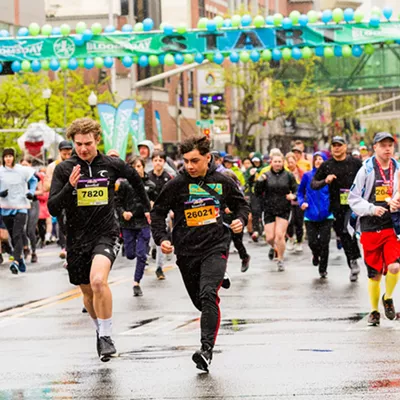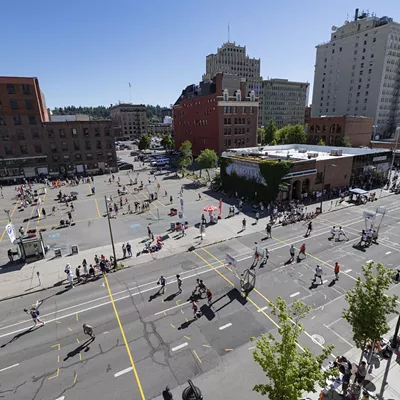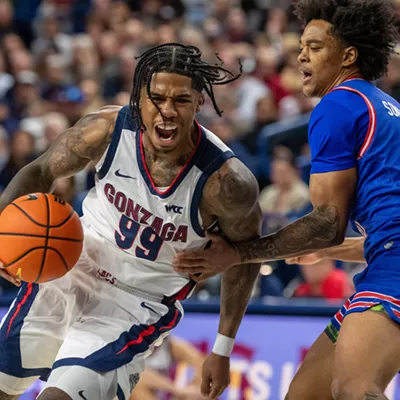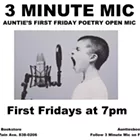There's a certain face people make when they're about to puke. Their eyes get wide. Blood rushes to their face. They double over like they were punched in the stomach by a ghost. Their tongue stretches toward the pavement as they watch vomit splatter in front of their shoes.
It's an act Matt Filippini got well acquainted with as a Bloomsday volunteer in the '90s. He and a group of other volunteers used to make bets on when the first puke would happen, he says. And he learned to read the signs.
Honestly, he says, it's not much different than seeing a cat barf, Filippini says.
"If you've ever seen a cat throw up — you see the shakes and know it's coming. Their chest starts going back and forth, their face turns red, and that's about it," Filippini says.
Filippini used to be part of a group of volunteers who timed the wheelchair racers. Filippini gained the "utmost appreciation" for how hard the wheelchair racers worked. But when they finished, he and the volunteers had some time to kill before the runners came in. And that's when he gained some appreciation for some gnarly pukes from the runners.
One runner puked right at the finish line, spraying his guts all over the pavement and the volunteers had to mop it up, Filippini says. Most of the pukes came in around 45 to 60 minutes, Filippini says. Sometimes a dozen runners would puke, and sometimes just one would. The volunteers, when making their bets, knew it usually came around the 45-to-60-minute mark.
But the bets weren't for any actual money.
"It was just jokingly," Filippini says. "Nobody won anything except for the title."
The privilege of witnessing a good barf was reward enough.




















